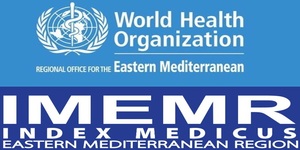Dissemination of Aminoglycosides Resistance in Pseudomonas Aeruginosa Isolates in Al-Nasiriya Hospitals Pseudomonas Aeruginosa
DOI:
https://doi.org/10.36321/kjns.vi20151.3158Keywords:
Pseudomonas aeruginosa, Antibiotic, Resistance, Aminoglycosides Modifying Enzymes (AMEs)Abstract
Background: Pseudomonas Aeruginosa is one of the primary opportunistic pathogens responsible for nosocomial infections. Aminoglycosides are an important component of antipseudomonal chemotherapy. The inactivation of drugs by modifying enzymes and 16S rRNA methylase are the most common mechanisms of aminoglycoside resistance.
Aim of the study: Investigate the occurrence of aminoglycoside resistance and the incidence of the 16S rRNA methylase and resistance-modifying enzyme genes in P. Aeruginosa isolated of several hospitals in Al-Nasiriya province.
Methodology: A total of 355 clinical isolates were collected of three main hospitals in Al-Nasiriya city. The isolates were classified according the source of collection to three groups (160 ear swab, 105 burn swab and 90 urine samples). The results of culture and biochemical tests showed that 65 isolate was Pseudomonas Aeruginosa, which then confirmed by API-20E. Antibiotic susceptibility test (by using the Kirby-pour technique) was performed to all these isolates by using 18 type of antibiotics. The isolates that resistance to at least one type of aminoglycosides were screened for the presence of modifying enzyme genes (AACs, APHs, ANTs) and 16S rRNA methylase genes by polymerase chain reaction.
Results: 65 (18.3%) isolates of P. Aeruginosa were identified. The results of antibiotic susceptibility test showed that 29 isolate (44.6%) resistance to at least one type of aminoglycosides which represented by gentamicin the highest (44.6%) and amikacin (18.5%) the lowest. Four genes of AAC were found in 21 (72.4%) aminoglycosides resistant isolates, aac(6')-Ib (69%), aac(6')-I (24.1%), aac(3)-II and aac(3)-I (10.3% each). The most repeated combinations, aac(6')-Ib+aac(6')-I and aac(6')-Ib+aac(3)-II, were detected in 12.7% and 6.9% of isolates, respectively. Negative results for the presence 16rRNA methylase (armA, rmtA, rmtD, and npmA), aph (3')-VI and ant (4')-IIb genes.
Conclusions: The aminoglycosides resistance rates in P. Aeruginosa were roughly high in Al-Nasiriya, and most of the resistance isolates harbored aac (6')-Ib gene.
Recommendations: In order to overcome the worrisome development of increased resistance to antibiotics in general and aminoglycoside in particular, continued national surveillance programs are crucial.
Downloads
Downloads
Published
How to Cite
Issue
Section
License
Copyright (c) 2015 Ali Abdul-Wahid, Ali Almohana

This work is licensed under a Creative Commons Attribution 4.0 International License.













